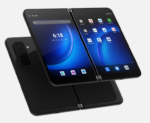If you are someone who sometimes has a hard time getting a grasp of reality, developments in technology have now enabled developers to augment it, making things a little easier. The up-and-coming mashup technology known as Augmented Reality has gotten a lot of buzz in the past year, particularly around location-based applications.
Describing the technology as a “digital overlay of the real world,” Gartner analyst Jackie Fenn also believes it to be a manifestation of heads-up displays, such as those used in commercial aircraft, which allow someone to view additional information without taking their eyes off what’s in front of them. Software development consultant and writer of SD Times’ Windows & .NET Watch column Larry O’Brien even went so far as to say it is an extension of What You See Is What You Get, meaning AR is an addition to what the end user sees.
In its essence, though, AR is a live view of the physical environment with computer-generated features layered on top, making whatever the user is looking at more interactive and digitally usable.
With higher-quality cameras, GPS systems and image recognition capabilities, smartphones such as the Android and iPhone have helped usher in AR applications and technology. Because of these mobile advancements, Fenn said, she has seen more experimentation with AR, and noted there is certainly “a lot of hype and excitement” surrounding it.
The biggest groundswell of AR apps is seen in the development of location-based applications. Real estate, tourist and astronomy apps have already started to implement this technology, and although AR’s business value and role have not yet been completely defined, one real estate agency has found the technology to be especially complementary to its business.
Web-based real-estate agency ZipRealty introduced in February an iPhone app that uses AR technology. Developed in-house, the app, called HomeScan, puts market information into their customers’ hands when they are out and about, said Leslie Tyler, ZipRealty’s vice president of marketing. HomeScan shows asking and sale prices of homes, along with photos, price estimates and other details. It offers “immediate gratification,” she said.
“Because most of real estate is done out [of the office], Augmented Reality was really well-suited for us. We want to focus on providing as much information for customers, and augmented reality makes things much more alive and compelling.”
Originally developed in December without AR features, HomeScan is available for free on Apple’s iTunes store (it requires version 3.1.3 of the operating system) and already has about 2,000 downloads. “We wanted to enhance our app and saw this technology work on other apps,” Tyler said. “And it’s great because real estate is really visual.”
The only drawback, she said, is that the devices using AR are too small.
Other real estate agencies, such as French-based MeilleursAgents, have also developed AR apps.
Other iPhone AR apps include Starmap and Peaks. Starmap users can point their iPhone at the sky to see what constellations they’re looking at, or use Peaks to get information about mountains and geography just by looking at them through their iPhones.
Although AR is incrementally becoming valuable, it is still in its early stage, O’Brien said. “I think augmented reality will be a part of every location-based app,” he said, but predicts it will take about a decade for enterprise developers to really start using the technology for business purposes. But he sees a lot of potential in it, with future integrations into cameras to label people and places, for example.
For now, AR is finding an entry point in consumer apps, and enterprises need to take some time to understand how to harness the technology and monetize it, Fenn said. “It’s a cool technology and a very powerful way to get information out there. It’s just going to take some time to wrap a business model around it.”





